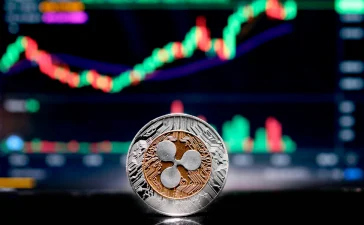Leading central banks are expected to begin cutting interest rates over the coming year as falling inflation fuels predictions among investors and economists that prices are under control.
After entering 2023 in the midst of aggressive interest rate increases, the Federal Reserve, European Central Bank and Bank of England put their tightening programmes on hold in the second half of the year.
Now, with headline inflation rates retreating in large parts of the G7 group of industrialised nations and economies slowing, the pressure for policymakers to cut borrowing costs is set to gather strength.
“We expect inflation to fall further than central banks expect,” said Neil Shearing, group chief economist at UK-based Capital Economics. He noted that growth was weakening just as distortions caused by the Covid-19 pandemic and global energy crisis were unwinding.
“Policy is now quite restrictive, meaning central banks can loosen without [it] necessarily becoming supportive [of growth]. Think of it as pressing less hard on the brake rather than pushing on the accelerator,” he said.
Investors are betting the Fed will cut for the first time in March, with five quarter-point cuts to follow during the year, according to market pricing. The ECB and the BoE are also expected to lower rates six times in 2024, with the former starting in March or April and the latter in May.
Financial markets ended 2023 sharply higher as investors became increasingly confident that the Fed was ready to start easing policy in the wake of its December 14 decision to hold rates. The rally put the MSCI World index, a gauge of global equities, on track for its best annual performance since 2019.
The key moment came at the Fed’s December meeting, as it released projections showing officials expected its benchmark federal funds rate — currently at a 22-year high of between 5.25 per cent and 5.5 per cent — to be cut by 75 basis points over the coming 12 months.
Speaking at the meeting, Fed chair Jay Powell failed to rebut market expectations of steep rate cuts in 2024, saying the central bank was “aware of the risk that we would hang on too long” by keeping policy too tight. “We know that’s a risk and we’re very focused on not making that mistake,” he said.

Other US rate-setters, including New York Fed president John Williams, subsequently sought to damp some of the speculation about early Fed rate cuts, but investors appear confident the central bank has done enough to begin easing.
Cooling price growth in November brought the six-month annualised rate of core personal consumption expenditure inflation, which strips out energy and food, down to 1.9 per cent, just below the central bank’s official 2 per cent inflation target.
“To achieve a ‘soft landing’ and raise the probability of maintaining full employment while inflation comes down, the Federal Reserve needs to take a more forward-looking approach to monetary policy,” said Tomasz Wieladek, an economist at investment manager T Rowe Price.
He argued that monetary policy would remain in “restrictive territory” even after the Fed’s first reductions, adding: “The inflation dynamics certainly allow, and indeed warrant, a rate cut as early as March 2024.”
However, by allowing financial conditions to ease, central banks risk stoking growth and asset prices and giving inflation a second leg. The ECB and BoE have struck a more hawkish tone than Powell, with both indicating in December that it was too soon to relax the fight against inflation.
Eurozone inflation slowed to 2.4 per cent in November, far below its peak of more than 10 per cent a year earlier and close to the ECB’s 2 per cent target. But economists remain wary of the risk of renewed price growth. A Financial Times survey showed the majority of economists polled expected the ECB to start cutting rates by the second quarter of 2024, but only two predicted a move as soon as the first three months of the year.
“I think that the ECB will likely cut in June 2024 at the earliest,” said Wieladek. “Data points such as negotiated wage growth, compensation per employee and unit labour costs all continue to imply persistently high inflation in the medium term.”
The BoE is also facing calls to acknowledge progress in the battle against inflation after a steep fall in the rate of consumer price growth to 3.9 per cent in November, down from a high of more than 11 per cent in October 2022. A third-quarter contraction in the economy has added to the pressure.
Jonathan Haskel, one of the hawks on the BoE’s monetary policy committee, subsequently said on social media site X that there was “news” in data showing an easing in a key measure of services inflation. But he also insisted policy should not be made on the back of a single release.
Andrew Goodwin, chief UK economist at Oxford Economics consultancy, said the November inflation reading should be a “game changer” for UK monetary policy, adding that while the BoE would be nervous about upcoming pay negotiations, he expected the bank to start lowering rates in May.
UK chancellor Jeremy Hunt told the FT in late December: “There’s a reasonable chance that if we stick to the course we’re on we’re able to bring down inflation, the Bank of England might decide they can start to reduce interest rates.”
Shearing argued that disinflation was more advanced in the US than in Europe, potentially allowing the Fed to cut rates sooner than some counterparts. But with core inflation dropping, he added, 2024 “is likely to be the year that interest rates across the developed world turn”.
Additional reporting by Tommy Stubbington in London









